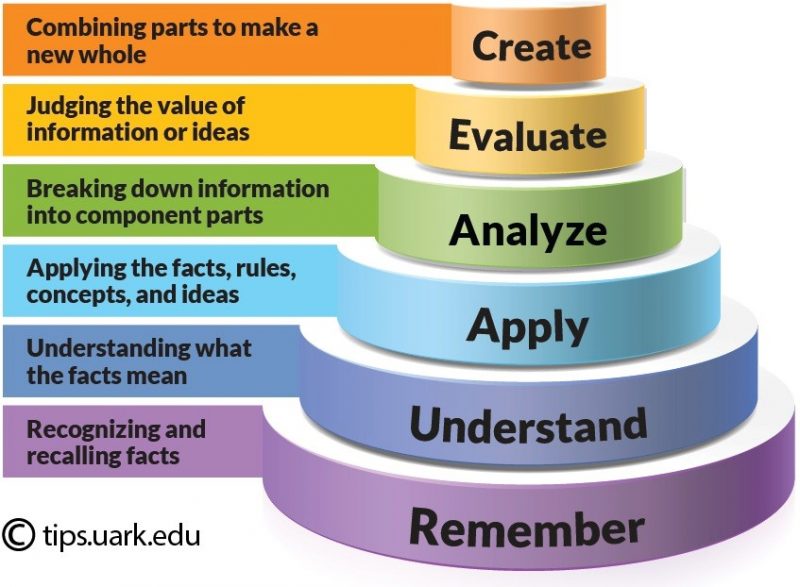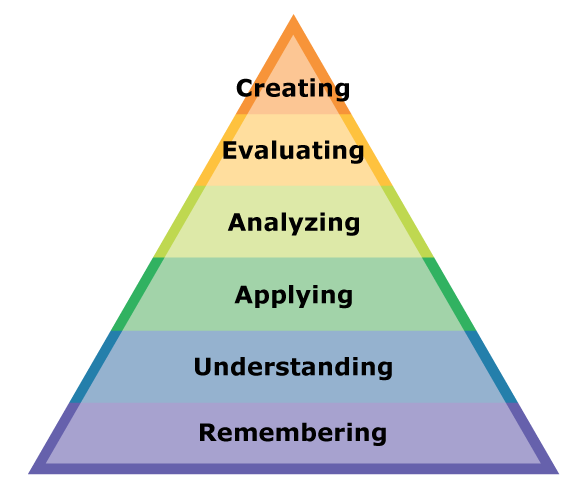Source: https://tips.uark.edu/using-blooms-taxonomy/
Bloom’s Taxonomy is a classification of the different objectives and skills that educators set for their students (learning objectives). The taxonomy was proposed in 1956 by Benjamin Bloom, an educational psychologist at the University of Chicago. The terminology has been recently updated to include the following six levels of learning. These six levels can be used to structure the learning objectives, lessons and assessments of your course.
- Remembering: Retrieving, recognizing and recalling relevant knowledge from long‐term memory.
- Understanding: Constructing meaning from oral, written, and graphic messages through interpreting, exemplifying, classifying, summarizing, inferring, comparing and explaining.
- Applying: Carrying out or using a procedure for executing or implementing.
- Analyzing: Breaking material into constituent parts, determining how the parts relate to one another and to an overall structure or purpose through differentiating, organizing and attributing.
- Evaluating: Making judgements based on criteria and standards through checking and critiquing.
- Creating: Putting elements together to form a coherent or functional whole; reorganizing elements into a new pattern or structure through generating, planning or producing.
Like other taxonomies, Bloom’s is hierarchical, meaning that learning at the higher levels is dependent on having attained prerequisite knowledge and skills at lower levels. You will see Bloom’s Taxonomy often displayed as a pyramid graphic to help demonstrate this hierarchy. We have updated this pyramid into a “cake-style” hierarchy to emphasize that each level is built on a foundation of the previous levels.

How Bloom’s Taxonomy can aid in course design
Bloom’s Taxonomy is a powerful tool to help develop learning objectives because it explains the process of learning:
- Before you can understand a concept, you must remember;
- To apply a concept you must first understand;
- In order to evaluate a process, you must have analyzed;
- To create an accurate conclusion, you must have completed a thorough evaluation.
Click here to read the complete article.



